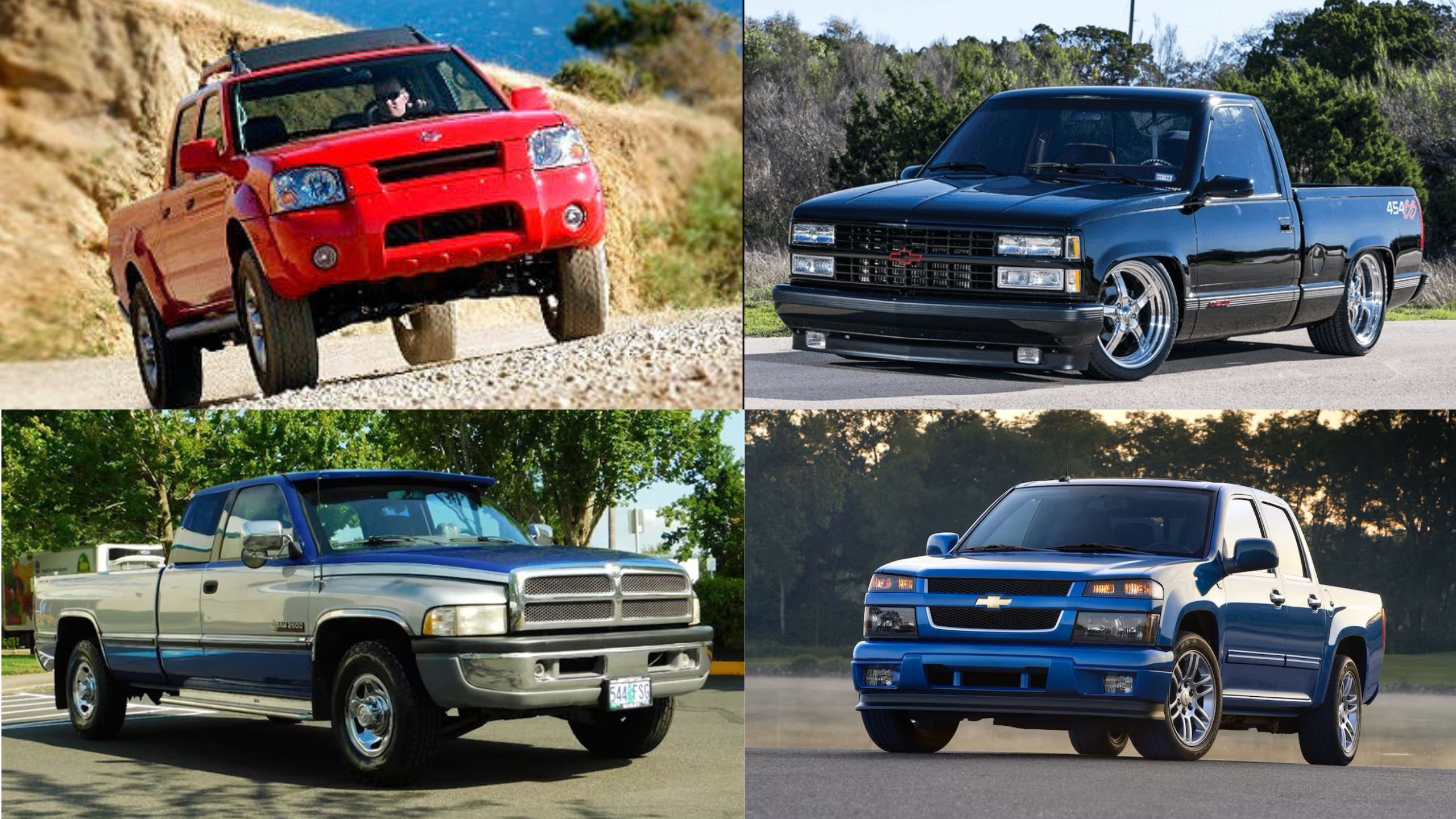When diving into the used trucks, buyers face a crucial decision between proven workhorses and potential money pits.
The secondary market offers incredible value for those willing to purchase vehicles with some history behind them, but not all trucks age with the same grace.
While some models continue to deliver reliable performance decades after leaving the factory floor, others become notorious for chronic issues that can drain both wallets and patience.
This guide explores five legendary old truck models that have earned their reputation as longevity vehicles that continue to serve faithfully long after their contemporaries have been scrapped.
We’ll examine five models that, despite their initial appeal or nostalgic value, simply don’t represent wise investments for the average buyer seeking dependable transportation or a solid work vehicle.
5 Reliable Old Trucks
Whether you’re a first-time truck buyer working with a limited budget or a seasoned enthusiast looking to add to your collection, understanding which models consistently deliver value over time versus those that commonly become restoration nightmares can save you significant time, money, and frustration.
1. Toyota Tacoma (1995-2004)
The first-generation Toyota Tacoma represents perhaps the gold standard of reliability in the compact pickup segment.
These trucks earned their legendary status through a combination of thoughtful engineering and Toyota’s uncompromising build quality during an era when the company was cementing its reputation for durability above all else.
At the heart of these vehicles sits Toyota’s 2.4L 2RZ-FE and 2.7L 3RZ-FE four-cylinder engines or the optional 3.4L 5VZ-FE V6, all powerplants renowned for their ability to reach astronomical mileages with minimal intervention.
It’s common to find examples with 300,000+ miles still running their original engines and transmissions.
What separates the first-gen Tacoma from competitors is its resistance to the common truck killers of its era. While contemporaries often succumbed to rust issues and frame failures, the Tacoma’s build quality helped many examples survive even in harsh salt-belt regions.
The simplicity of its design also contributes significantly to its longevity, fewer complex electrical systems mean fewer failure points.
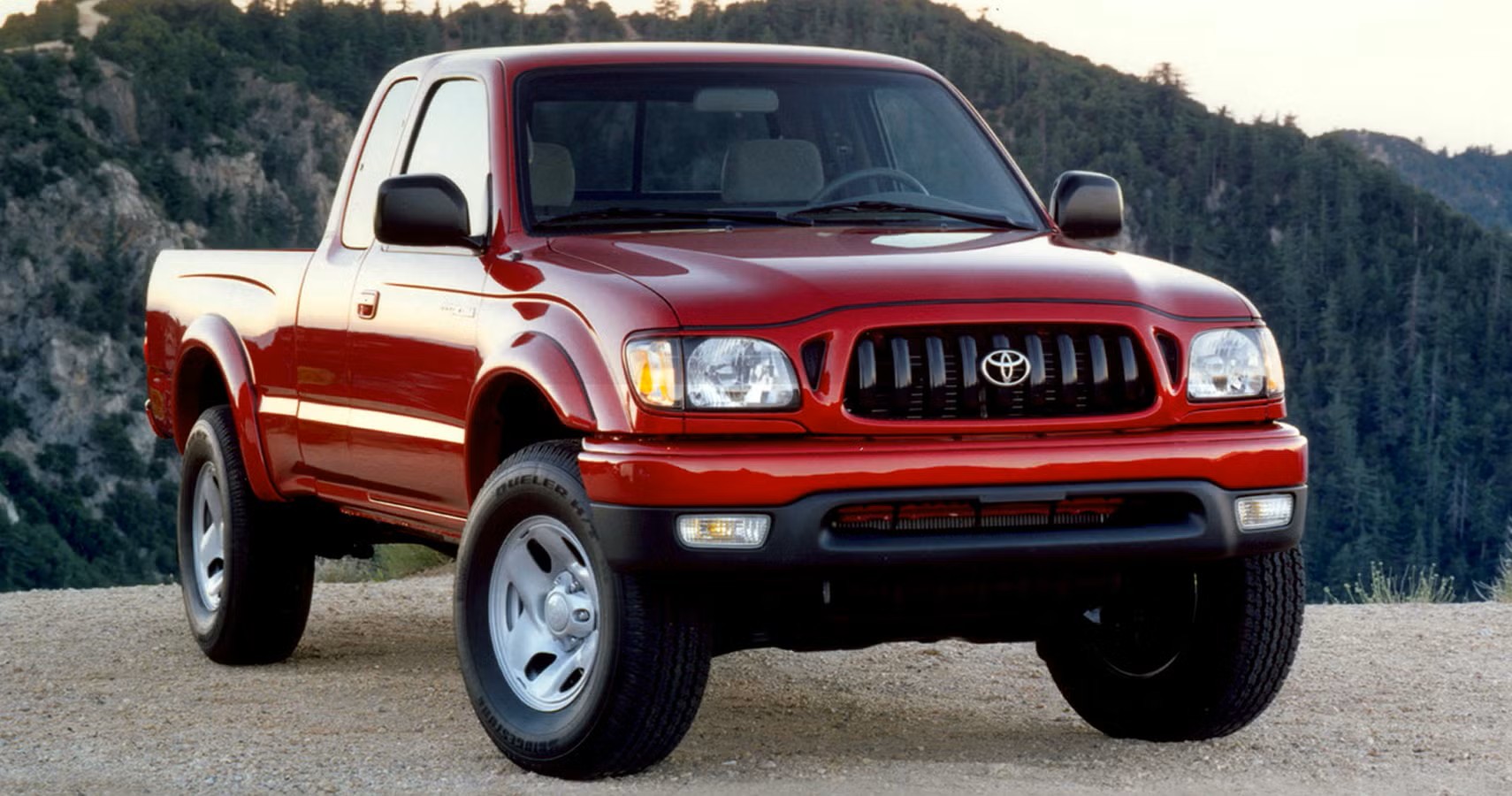
When parts do eventually wear, replacements remain plentiful and relatively affordable thanks to Toyota’s commitment to parts availability and the truck’s massive aftermarket support.
From a maintenance perspective, these trucks offer straightforward serviceability with ample engine bay room that makes routine tasks manageable even for novice mechanics.
Oil changes, spark plug replacements, and brake service can all be accomplished without specialized tools, keeping long-term ownership costs remarkably low.
This DIY-friendly nature has created a strong community of knowledgeable owners who freely share maintenance tips and troubleshooting advice online.
While not without occasional issues, some models experienced minor timing chain tensioner problems, and rear brake drums can be stubborn during replacement, the package delivers exceptional reliability.
For buyers seeking a compact truck that can serve as daily transportation while handling moderate hauling and off-road duties with minimal drama, the first-generation Tacoma remains the benchmark that newer trucks are measured against.
2. Ford F-150 (1996-2003)
The tenth-generation Ford F-150, spanning model years 1996 through 2003, represents one of the most successful iterations of America’s bestselling vehicle.
This generation marked Ford’s transition to a more modern, aerodynamic design language while maintaining the rugged capability that defined the F-Series legacy.
What makes these trucks particularly coveted in the used market is their near-perfect balance of modern amenities and mechanical simplicity sophisticated enough to offer comfortable daily driving, but engineered before the proliferation of complex electronics that plague newer vehicles.
Powertrain options significantly contribute to this generation’s reputation for longevity. The 4.6L and 5.4L Triton V8 engines from Ford’s modular engine family, when properly maintained, routinely surpass 250,000 miles without major internal work.
The 4.6L variant especially stands out for its bulletproof reliability, with many mechanics considering it among the most dependable truck engines ever produced.
The manual transmissions offered during this period perform admirably, while the 4R70W automatic transmission, though not without occasional issues, generally provides reliable service with appropriate maintenance intervals.
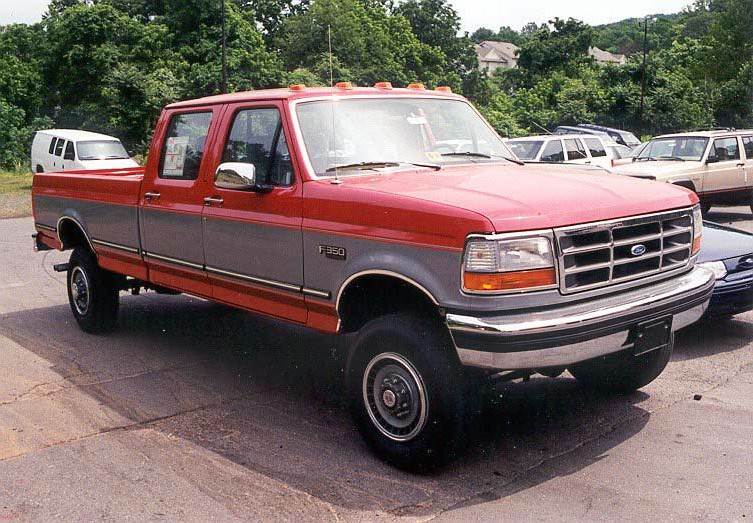
Body integrity represents another strength of these F-150s. Ford implemented significant corrosion protection improvements during this generation, resulting in bodies that resist rust better than many contemporaries.
The frame design addresses weaknesses from previous generations, creating a solid foundation that stands up to heavy work without developing the stress cracks that plagued some competing models.
Common wear items like ball joints, tie rod ends, and wheel bearings were overbuilt for the truck’s typical duties, leading to extended service intervals.
When repairs become necessary, parts availability remains excellent thanks to the millions of these trucks produced and Ford’s continued support of legacy models.
The straightforward nature of most systems means that even complex-seeming repairs often require only basic mechanical knowledge and standard tools, making ownership financially sustainable even for those on tight budgets.
3. Chevrolet/GMC C/K 1500 (1988-1998)
The GMT400 platform Chevrolet and GMC trucks, commonly known as the “OBS” (Old Body Style) trucks among enthusiasts, represent perhaps the perfect sweet spot between classic truck simplicity and modern driving dynamics.
These square-body beauties from 1988-1998 combine timeless styling with remarkably durable mechanicals, earning them cult status among truck aficionados and practical-minded buyers alike.
Their enduring presence on American roads, still often found in daily service decades after production, speaks volumes about their fundamental engineering excellence.
At the heart of these trucks’ reliability is General Motors’ legendary small-block V8 engine family, particularly the 5.0L (305ci) and 5.7L (350ci) variants.
These proven powerplants benefit from over three decades of continuous development before their implementation in the GMT400 trucks, resulting in an engine design whose weaknesses had been almost entirely engineered out.
The TBI (Throttle Body Injection) fuel delivery system used on earlier models offers a perfect marriage of modern fuel injection dependability with carburettor-like simplicity and repairability.
Later, Vortec-equipped trucks provide improved power and efficiency while maintaining excellent longevity.
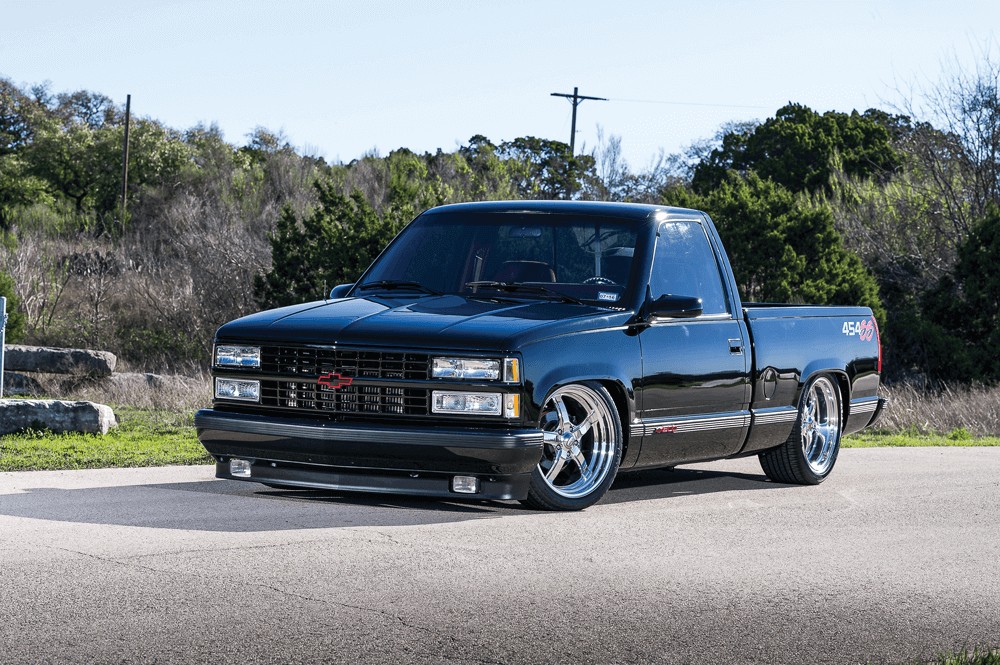
The 4L60 (and later 4L60E) automatic transmissions, when properly maintained with regular fluid changes, commonly reach 200,000+ miles before requiring attention.
The manual transmission options, particularly the New Venture 3500 five-speed, are renowned for their durability under heavy use.
The transfer cases in 4×4 models, often the Achilles’ heel in competing trucks, were overbuilt for their typical duties, contributing to these trucks’ reputation as reliable off-road companions.
Perhaps most importantly, these GM trucks were built during an era when the automaker prioritized serviceability alongside durability.
Components were designed with repair in mind, featuring logical layouts, accessible fasteners, and minimal specialized tool requirements.
This philosophy extends to the electrical system, which avoids the complex multiplexed networks of modern vehicles in favor of straightforward circuits that can be diagnosed and repaired by owners with basic electrical knowledge.
Even the interior components demonstrate remarkable longevity, with dashboard panels and seat upholstery often outlasting those in luxury vehicles from the same period.
4. Dodge Ram 2500/3500 (1994-2002)
The second-generation Dodge Ram heavy-duty trucks represent a watershed moment in American truck design, combining revolutionary styling with mechanical components engineered for relentless work capacity.
While the entire Ram lineup from this era deserves recognition, it’s specifically the 2500 and 3500 models equipped with the legendary 5.9L Cummins turbo diesel engine that have earned an unshakeable reputation for extreme longevity.
These trucks routinely accumulate mileages that seem almost fictional, 500,000 to 1,000,000 miles on original engines while continuing to perform their intended functions without compromise.
The 12-valve version of the Cummins 6BT engine (1994-1998) stands as perhaps the most reliable diesel engine ever installed in a consumer pickup truck.
Its mechanical simplicity, with direct mechanical injection requiring no complex electronics, creates an almost unstoppable powertrain that remains largely immune to the issues that typically sideline modern computerized diesel engines.
The later 24-valve variant (1998-2002) introduced electronic controls while maintaining the fundamental durability of its predecessor.
Both versions produce immense torque that seems impervious to age, continuing to pull massive loads hundreds of thousands of miles into their service lives.

Transmission choices significantly impact reliability in these trucks. The NV4500 five-speed manual transmission, with its cast iron case and overbuilt internals, stands as the most durable option and is highly sought by knowledgeable buyers.
The automatic transmissions require more vigilant maintenance, but can still deliver excellent service when paired with appropriate cooling systems and regular fluid changes.
The heavy-duty suspensions on these trucks were designed with commercial use in mind, utilizing larger components than strictly necessary for most civilian applications.
This overbuilding results in front-end components and rear leaf spring assemblies that outlast those in comparable trucks from other manufacturers.
The frame design, with its fully boxed sections in high-stress areas, resists the fatigue and cracking issues that plague some competitors.
While body rust can become problematic in harsh climates and interior components often show wear earlier than ideal, the fundamental mechanical architecture of these trucks, particularly in Cummins-equipped configurations, represents one of the most durable vehicle platforms ever mass-produced for the consumer market.
5. Nissan Frontier (1998-2004)
Often overshadowed by its Toyota competitor, the first-generation Nissan Frontier offers exceptional reliability in a frequently overlooked package.
These trucks represent a tremendous value proposition in today’s used market, delivering comparable durability to the Tacoma but typically at a significantly lower acquisition cost.
Built during Nissan’s engineering renaissance of the late 1990s, these Frontiers benefited from the company’s renewed focus on build quality and longevity.
The 2.4L KA24DE four-cylinder engine that powered base models is essentially bulletproof when maintained properly. This straightforward DOHC design, evolved from Nissan’s sports car lineup, provides adequate power while demonstrating remarkable tolerance for neglect, continuing to run smoothly even when maintenance intervals are stretched beyond recommendations.
The optional 3.3L VG33E V6, while not quite as legendary as Toyota’s 3.4L counterpart, still routinely surpasses 250,000 miles without internal repairs when treated to regular oil changes.
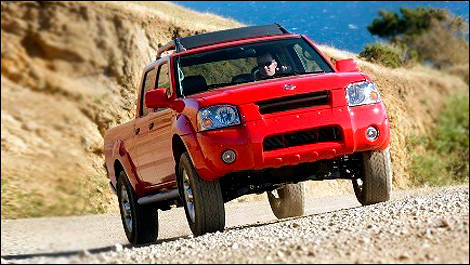
Transmission options include a robust five-speed manual that rarely experiences issues beyond normal clutch wear and a four-speed automatic that, while not particularly exciting, delivers dependable service.
The transfer cases in 4×4 models demonstrate excellent durability even when subjected to regular off-road use. Differential components were overbuilt for the truck’s weight and typical duties, contributing to the Frontier’s reputation for low-drama ownership.
Where the Frontier truly shines is in its electrical system reliability. Unlike many contemporaries that develop frustrating electronic gremlins with age, the Frontier maintains excellent electrical integrity even into high mileages.
The HVAC systems demonstrate similar longevity, with original compressors and blower motors often continuing to function properly well past the 20-year mark.
Body integrity rivals the best in its class, with good corrosion protection helping these trucks maintain structural soundness even in harsh environments.
Though the interior materials don’t quite match Toyota’s standards for wear resistance, the package delivers exceptional mechanical reliability in a competent, comfortable truck that can handle everything from daily commuting to weekend adventures without complaint.
For budget-conscious buyers seeking maximum reliability per dollar spent, the first-generation Frontier represents one of the smartest purchases in the used truck market.
5 Old Trucks to Avoid
1. Dodge Dakota (2005-2011)
The third-generation Dodge Dakota represents one of the most disappointing entries in the midsize truck segment, combining questionable design decisions with subpar execution.
What makes these trucks particularly frustrating is how they managed to squander the goodwill established by previous Dakota generations, which had carved out a unique market position as the only midsize truck offering V8 power.
This final iteration instead delivered a vehicle plagued by chronic issues that often manifest well before the odometer reaches six figures.
Powertrain problems represent the most significant concern with these trucks. The 3.7L V6 and 4.7L V8 engines both suffer from multiple design flaws that compromise their longevity.
The 3.7L routinely experiences valve seat failures that necessitate cylinder head replacement, while the 4.7L is notorious for catastrophic overheating issues due to inadequate cooling system design.
Both engines suffer from an oil consumption problem that progressively worsens with age, eventually leading to premature engine failure if not constantly monitored and maintained.
The automatic transmissions paired with these engines fare no better, with the 42RLE and 545RFE units experiencing solenoid failures and torque converter issues at mileages where competitors’ transmissions are just reaching their stride.
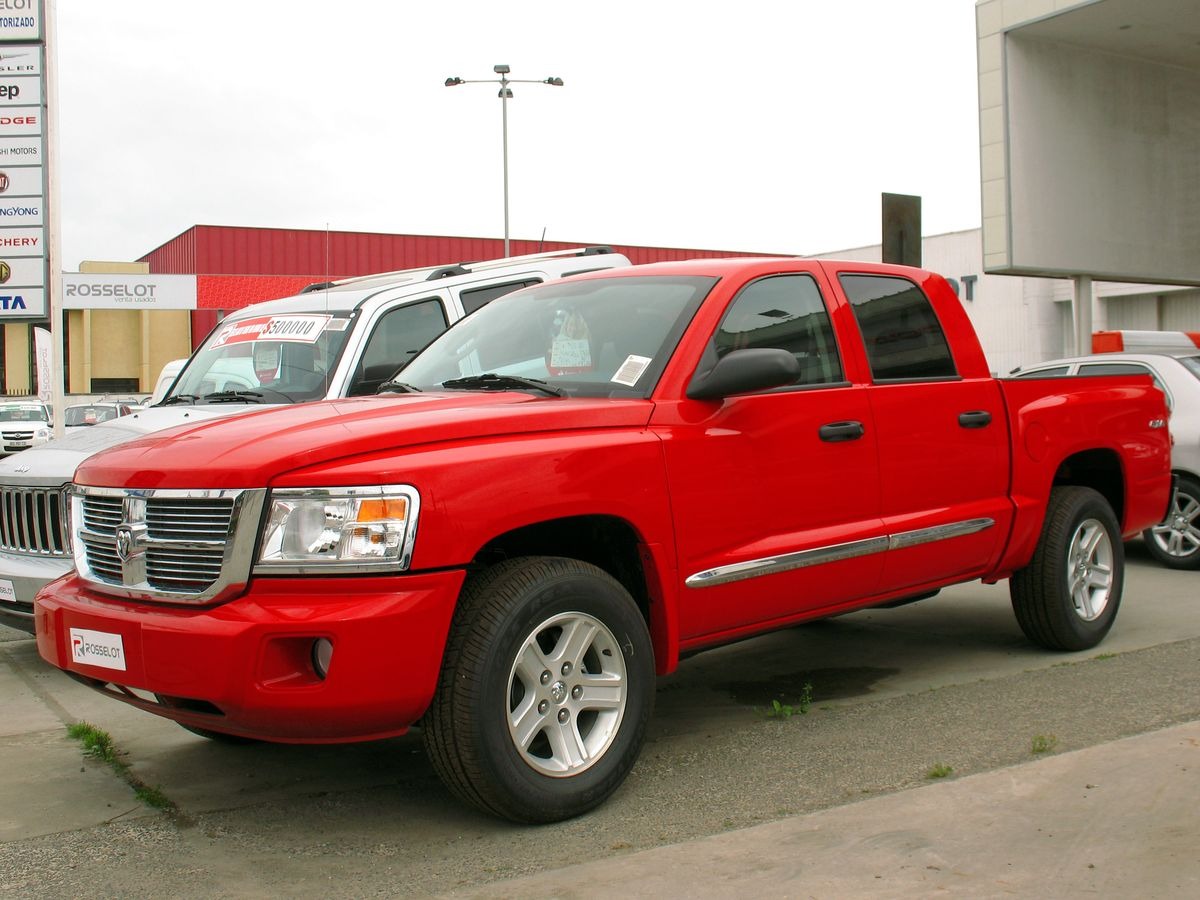
Electrical system reliability presents another major concern. The integrated power module (TIPM), essentially the truck’s central nervous system, frequently fails, causing random electrical gremlins ranging from inoperative power windows to no-start conditions.
Replacement modules are expensive and often require dealer programming, making what should be a straightforward repair into a costly ordeal.
Dashboard instrument clusters routinely develop erratic behavior, with gauge needles sticking or providing inaccurate readings.
Interior quality falls well below acceptable standards even for the era, with brittle plastics that crack under normal use and seat upholstery that wears through prematurely.
The heating and air conditioning systems demonstrate poor reliability, with blend door actuators failing regularly and compressors that seldom last beyond 100,000 miles.
Even the exterior components disappoint, with headlight assemblies that cloud prematurely and door handles that break with normal use.
Given these numerous shortcomings and the availability of far more reliable alternatives in the used market, the third-generation Dakota represents a purchase that even budget-conscious buyers should avoid at all costs.
2. Ford F-150 (2004-2008)
The eleventh-generation Ford F-150, covering model years 2004 through 2008, stands as a cautionary tale of how even America’s best-selling vehicle can sometimes falter dramatically.
While visually impressive and comfortable by the standards of its day, these trucks harbor numerous serious mechanical and structural issues that make them problematic long-term propositions.
What makes these F-150s particularly dangerous for uninformed buyers is how common they remain in the used market due to Ford’s massive production volumes during this period.
The most notorious issue plaguing these trucks involves the 5.4L Triton V8 engine, specifically its cam phaser and spark plug problems.
The variable valve timing system frequently fails prematurely, creating a distinctive ticking sound that precedes expensive repairs.
More alarmingly, the spark plug design in early versions of this engine incorporated a two-piece construction that could separate during removal, leaving the lower portion firmly stuck in the cylinder head.
Later models addressed this with a revised design, but introduced a different problem where spark plugs could blow out of the head entirely while driving, stripping threads and necessitating extensive repairs.
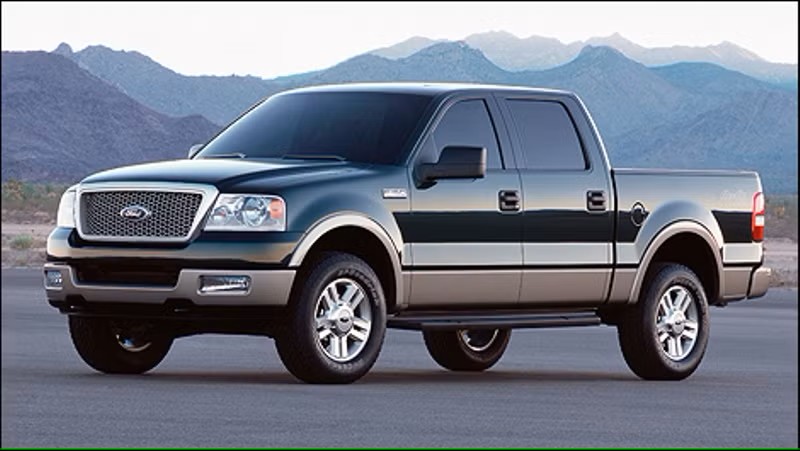
Transmission durability presents another significant concern. The 4R75E automatic transmission used in these trucks frequently experiences harsh shifting and eventual failure, particularly when subjected to towing or hauling, precisely the duties for which truck buyers select these vehicles.
Internal components wear prematurely even under normal use patterns, leading to slipping and eventual transmission replacement well before comparable components in competitors’ trucks require attention.
Structural integrity issues compound these mechanical concerns. Many trucks from this generation develop frame rust at an accelerated rate, particularly around the rear shock mounts and forward suspension attachment points.
This rust often progresses beyond cosmetic concerns to genuinely compromise the frame’s strength, creating potential safety hazards and necessitating expensive repairs.
The leaf spring shackles and hangers corrode aggressively as well, sometimes leading to spring pack failures that leave the vehicle undrivable.
Interior component quality falls well below Ford’s usual standards, with dashboard panels that crack prematurely, climate control knobs that break under normal use, and seat frames that develop irritating squeaks and rattles.
The body-colored plastic exterior components, particularly mirror covers and door handles, deteriorate rapidly under UV exposure, creating an aged appearance disproportionate to the vehicle’s actual years.
3. Chevrolet Colorado/GMC Canyon (2004-2012)
The first-generation Chevrolet Colorado and its mechanical twin, the GMC Canyon, represent General Motors’ most disappointing effort in the compact/midsize truck segment.
Introduced as replacements for the beloved S-10/Sonoma trucks, these vehicles failed to live up to their predecessors’ reputation for reliability and value.
While initially praised for their modern styling and car-like driving dynamics, these trucks quickly revealed themselves as mechanical disappointments that damaged GM’s reputation among loyal truck buyers.
Engine problems plague nearly all variants of these trucks. The 2.8L and 3.5L (later expanded to 2.9L and 3.7L) inline engines, collectively known as the Atlas family, suffer from multiple design deficiencies.
The most common issue involves the timing chain tensioner system, which can fail catastrophically with little warning, allowing the chain to jump timing and potentially cause severe engine damage.
Head gasket failures occur at an alarming rate, particularly on earlier models, leading to coolant consumption and overheating.
Perhaps most concerning is the endemic oil consumption these engines develop, progressively worsening with age and sometimes requiring a quart of oil added every 1,000 miles a condition GM notably refused to acknowledge as problematic.
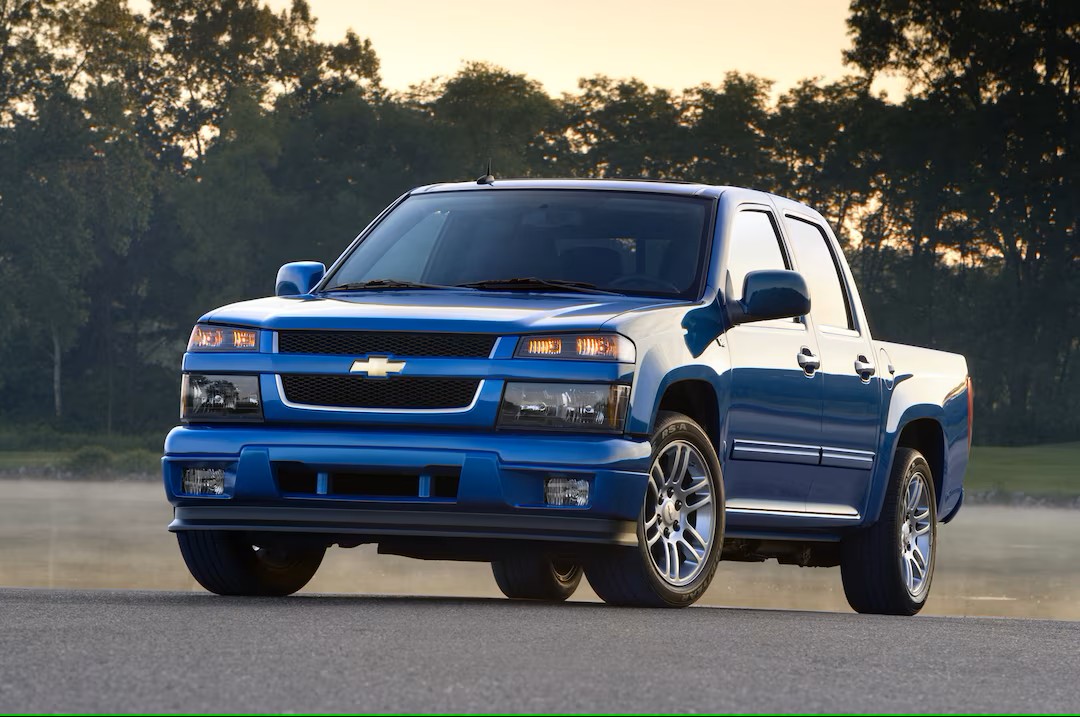
The automatic transmissions paired with these engines demonstrate similarly poor longevity. The 4L60E units installed in these trucks seem particularly prone to failure when compared to identical transmissions in other GM vehicles, suggesting potential cooling or electronic control issues specific to this application.
Valve body problems create erratic shifting patterns before eventually progressing to complete transmission failure, often between 80,000 and 120,000 miles, far too early for a modern truck.
Electrical system reliability presents another major concern. The instrument clusters frequently develop erratic behavior, with gauges that provide inaccurate readings or fail.
The body control modules are susceptible to water damage due to poor placement, creating random electrical gremlins that prove frustrating to diagnose and expensive to repair.
Even the relatively simple power window systems demonstrate poor reliability, with regulators that fail prematurely and switches that become intermittent.
Interior quality falls dramatically below acceptable standards, with brittle plastic components that crack and break under normal use.
Seat upholstery wears through at accelerated rates compared to competitors, and the heating/cooling systems develop leaks and blower motor failures with disappointing frequency.
Given these numerous concerns and the availability of far more reliable alternatives in the used truck market, the first-generation Colorado/Canyon represents a purchase best avoided, regardless of price or apparent condition.
4. Nissan Titan (2004-2015)
The first-generation Nissan Titan represents a case study in how solid initial engineering can be undermined by persistent quality control issues and design oversights.
Developed during Nissan’s ambitious expansion period under Carlos Ghosn’s leadership, the Titan was intended to challenge American brands in the full-size truck segment.
While impressive on paper and in early reviews, these trucks quickly developed a reputation for numerous chronic problems that persist throughout their unusually long production run spanning 2004 through 2015.
The 5.6L VK56DE V8 engine initially appeared promising, but reveals serious flaws with age. Timing chain tensioner failures represent the most common catastrophic issue, creating a distinctive rattling noise before eventually allowing the chain to jump timing and cause valve damage.
Oil consumption progressively worsens as these engines age, eventually requiring constant monitoring and frequent top-offs.
The exhaust manifold design proves particularly problematic, with studs that break due to excessive heat cycling, creating expensive repair bills and distinctive ticking noises.
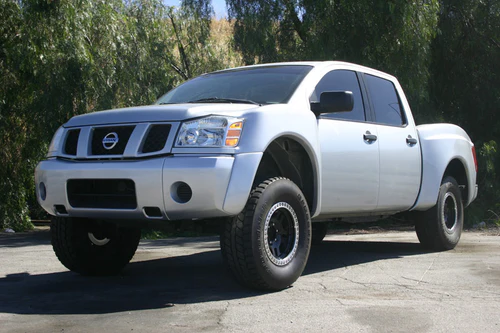
Transmission durability presents another significant concern. The RE5R05A five-speed automatic transmission suffers from multiple points of failure, including solenoid issues and valve body problems that create harsh shifting before progressing to complete failure.
The transmission cooling system design inadequately protects the unit during towing operations, precisely when cooling is most crucial, leading to fluid degradation and accelerated wear.
These problems typically manifest between 80,000 and 120,000 miles, well below the expected lifespan for a modern truck transmission.
The rear differential design contains a fundamental flaw in the axle seal design that allows gear oil to contaminate the rear brake assemblies, creating both a safety hazard and an expensive repair requirement.
This issue became prevalent enough that Nissan eventually issued a service bulletin, but many trucks remain on the road with unaddressed problems.
Front suspension components wear at accelerated rates compared to competitors, with control arm bushings and ball joints typically requiring replacement before 100,000 miles.
Interior quality represents another disappointment, with dashboard materials that crack and distort under heat exposure and seat upholstery that wears through prematurely.
The first-generation infotainment systems are notoriously unreliable, with display screens that fail and audio systems that develop erratic behavior.
Even the exterior components demonstrate poor longevity, with paint that chips easily and clear coat that fails prematurely, especially on dark-colored trucks.
Also Read: 10 Vehicles That Still Run With Original Engine and Transmission
5. Mazda B-Series/Ford Ranger (1998-2011)
The later generations of the Ford Ranger and its mechanical twin, the Mazda B-Series, illustrate how neglected platform development can transform once-reliable workhorses into outdated liabilities.
While early Rangers earned strong reputations for simplicity and durability, the trucks produced from 1998 through the platform’s discontinuation in 2011 suffered from corporate neglect as Ford focused development resources elsewhere.
What makes these trucks particularly problematic is how their fundamental design dates back to the early 1980s, leaving buyers with vehicles that combined modern fragility with decades-old engineering compromises.
Powertrain issues vary by engine but create consistent ownership headaches. The 3.0L “Vulcan” V6 suffers from intake manifold failures due to a plastic component that degrades over time, eventually causing coolant leaks and overheating.
The more desirable 4.0L SOHC engine introduced in this generation brought its problems, with timing chain cassettes and guides that fail prematurely, creating expensive repair requirements that often exceed the truck’s market value.
Even the relatively simple 2.3L and 2.5L four-cylinder engines develop head gasket issues at higher mileages, creating repair bills disproportionate to these trucks’ modest capabilities.
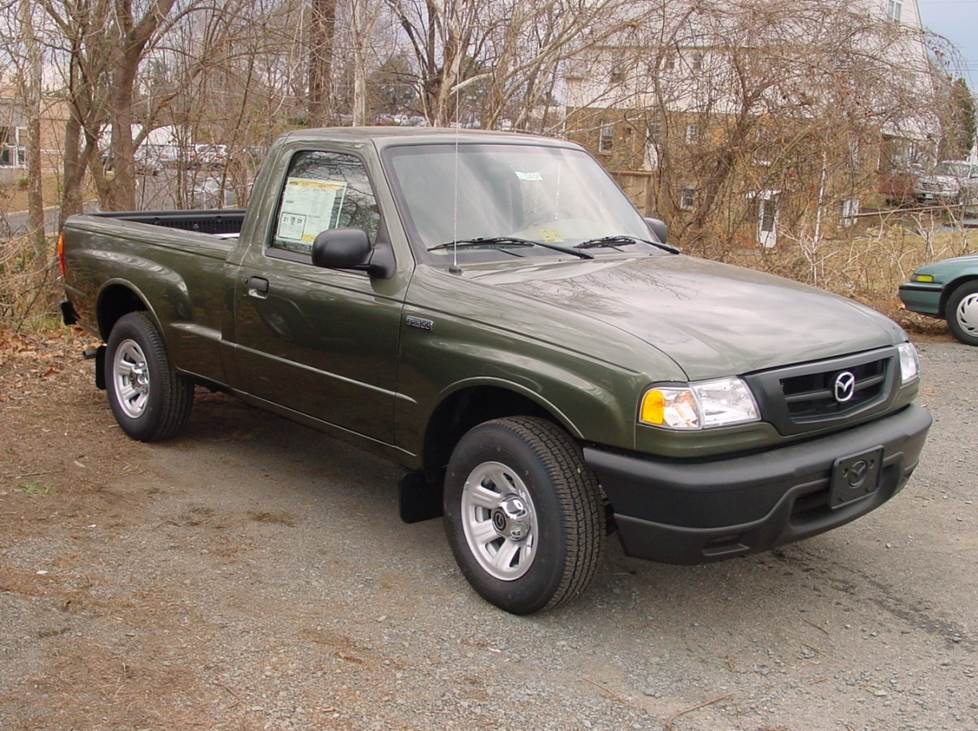
The automatic transmissions paired with these engines demonstrate poor longevity, particularly the 5R55E units behind V6 engines.
These transmissions develop harsh shifting characteristics before progressing to complete failure, often before reaching the 150,000-mile mark.
The manual transmissions fare somewhat better but suffer from synchro wear that makes shifting increasingly difficult with age.
Safety represents another major concern with these trucks. Their fundamental design predated modern crash protection standards, and while Ford made incremental improvements over the years, these vehicles consistently received poor ratings in offset frontal crash tests.
The lack of electronic stability control standards in most competitors by the end of this generation creates additional risk, particularly given the trucks’ tendency toward unpredictable handling in emergency maneuvers.
Rust protection shows significant deficiencies, with rear wheel arches and cab corners that corrode aggressively even in moderate climates.
The frame design allows water and road debris to collect in multiple areas without adequate drainage, creating accelerated corrosion that can compromise structural integrity.
Interior components fare no better, with brittle plastics that break under normal use and seat mechanisms that develop annoying squeaks and rattles relatively early in their service lives.
Also Read: 10 Longest-Running Vehicle Generations Still in Use

